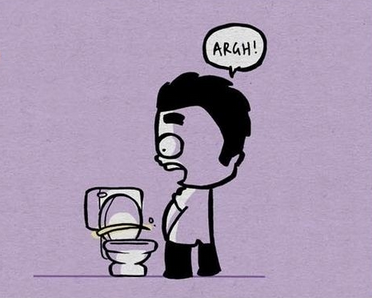Next time you head to the urinal and notice a change in the arc of your urine stream this could mean that you could have potential prostate problems. This could help detect life-threatening prostate problems earlier. The shape of a man’s urine stream could indicate if he has prostate problems, new research suggests.
 Scientists at Queen Mary, University of London, have discovered that a change in the characteristic arc-shape of a man’s urine stream could indicate problems with urine flow and in turn, the prostate.
Scientists at Queen Mary, University of London, have discovered that a change in the characteristic arc-shape of a man’s urine stream could indicate problems with urine flow and in turn, the prostate.
The prostate is a small, doughnut-shaped gland that lies directly under the bladder and surrounds the urethra (the tube that removes urine from the body). It grows as men age, and can start to compress and narrow the urethra.
The bladder then has to work harder to empty, and as a result men have difficulty passing urine.
This lack of flow could also affect the shape of a man’s urine stream.
The new research, published in the journal PLOS One, is the first study to analyse the specific pattern a man’s urine makes and whether it could be used to detect prostate problems.
The medical engineers at Queen Mary used 60 healthy volunteers and 60 patients to test whether self-measurement of the shape of the urine stream could be used to predict maximum urine flow rate.
They found the men were able to self-evaluate their arcs to determine whether their flow rates were indicative of some kind of urinary problem such as those associated with prostate enlargement.
Co-author Dr Martin Knight from Queen Mary’s School of Engineering and Materials Science explained: ‘The characteristic shape is due to the surface tension in the urine and the elliptical shape of the urethra.
‘We found there was an excellent correlation between the shape of the urine stream and the urine flow rate.’
The charity Prostate Cancer UK estimates that 40 per cent of men over the age of 50 and 75 per cent of men in their 70s have urinary symptoms that may be caused by an enlarged prostate.
Dr Knight added: ‘The current techniques, although very accurate, are difficult or expensive to use reliably outside of a clinic.
‘This new approach may therefore represent a useful solution to this important medical engineering problem, allowing men to easily monitor their urine flow rate.’
Such self-evaluation could also go a long way towards catching potentially life-threatening prostate problems early.
By ANNA HODGEKISS, www.dailymail.co.uk

